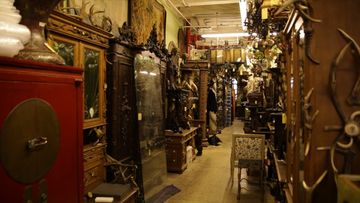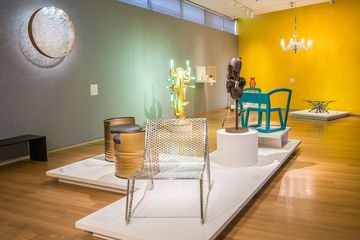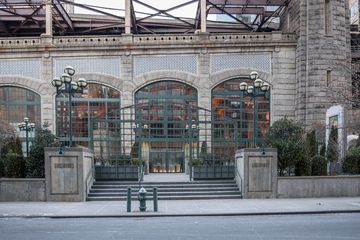I first discovered Newel when it was on 53rd Street. Pressing the doorbell, I was greeted by Jake Baer, the fourth-generation family owner of Newel Antiques. Entering the showroom lit by Murano glass chandeliers, I made my quick introduction, and was kindly offered a tour of their five floors - each one filled with an astonishing assortment of furniture. From the French, Italian, English, Modernist or Renaissance period, as well as a basement filled with wicker pieces, Jake explained to me that Newel has an eclectic selection to keep up with the latest trends. They represent every period and style and can go in any direction depending on the need and interest of the time and the customer. I was overwhelmed, yet mesmerized, at the same time, by shelves stacked to the ceiling and overflowing with treasures from the fifteenth century. There were chairs and tables of all shapes and sizes crowned together, as Jake nonchalantly rattled off their backstories including telling me where they had been used. "That giant Venetian birdcage was on Boardwalk Empire, " for example. Jake also shared that Pygmalion was the first show that launched his great grandfather's company; they still have some of the original pieces that were used some seventy-five years ago. Newel is not a typical antiques store. The business got its start in the 1930s when founder, Meyer Newman, began visiting various Broadway productions and asking what type of furniture they needed for their sets. "Without quite knowing how, " Jake explained, he would find what directors needed and rent it to them for less than buying the piece would have cost. This same model continues to this day, though "ninety-eight percent" of the furniture, according to Jake, is for sale. Most of what Newel does is to rent out period furniture and paintings for television shows, movies, fashion shoots and store windows. "Rental is the DNA of our business - it got us to be where we are today, and always takes us back to our roots. " "Nobody does it on this scale, " Lewis Baer, Jake's father, told me about the renting side of Newel's business. Nor does anybody have the volume of authentic, high-quality items. "Anyone is welcome inside of this world of antiques, " Mr. Baer went on to explain. Newel tries to make themselves accessible to all ages. They work tirelessly to interact and build relationships with the theater world, movie set designers and interior decorators. Nowadays, minimalism is in vogue and people do not buy as many antiques as they would have a generation ago. Thus, the Baer family focuses most of their energy on renting their antiques, and on selling their new line of beautiful original chandeliers, crafted on the island of Murano in Venice. Most importantly, though, Newel remains family-owned just as they were in the 1930s, and these warm ties are evident in every aspect of the business.



